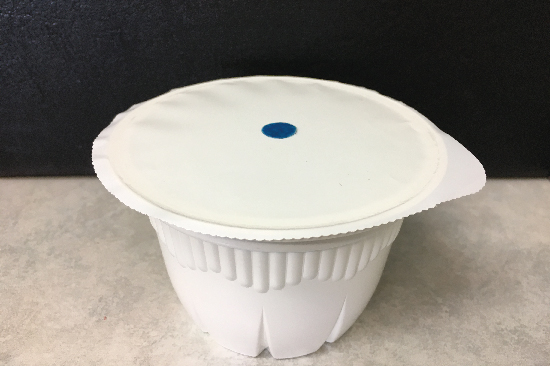
- The sensor will turn blue when oxygen enters the interior causing food to deteriorate.
- This will allow the food consumed to be additive-free, less processed and safe for the consumer.
IATA researchers in collaboration with the company Juan and Juan Industrial, S.L.U., belonging to the Vicky Foods Group, have developed a sensor to introduce it into food packaging in a totally safe way, in order to provide information on the state of the product to consumers.
This will allow us to consume less processed products, without additives or preservatives, assuring the consumer that the food is safe.
The sensor is housed in a multi-layer film that covers the food being protected both from the outside and the inside without ever being in contact with the contents of the package. For this reason, at the moment in which the wrapping was physically affected by defect or inadequate handling, the oxygen would enter, putting at risk the quality and safety of the food and the packaging would change colour, alerting the consumer. If oxygen penetrates, the sensor turns blue indicating the presence of gas in the container. In this way we can avoid eating bad products.
This sensor can be used in pre-cooked foods, such as baby foods, which are generally products without preservatives, reduced in salt and acid content, and therefore deteriorate easily by oxidation and growth of microorganisms in the presence of oxygen. For this reason, these foods are packed in hermetic containers with an inert atmosphere (without oxygen) to avoid their oxidation and the growth of aerobic microorganisms.
This type of new systems that are being implemented thanks to the new processing and packaging technology are called intelligent containers, which are defined as those that control the state of the packaged food or the environment that surrounds it. They have been developed to provide consumers with relevant information to assist them in making consumer decisions.
Intelligent packaging systems are mainly based on temperature control, microbiological control, development of unpleasant flavours or gas control. In this package, the presence of oxygen inside the package is controlled.
In many cases the food is affected by toxic pathogenic bacteria that can cause food toxiinfections such as vomiting or diarrhoea, and which develop thanks to the presence of oxygen. In the case of these bacteria, their growth does not physically alter the product and therefore are very difficult to detect and as the label has an expiry date indicating the validity of consumption, the consumer has no information before consuming the product. The sensor described here, identifies a bad state with a change of color and is an improvement over the expiration date printed on the package.
As for its manufacture, Dr. Rafael Gavara, principal investigator of the study, explains that "this sensor can be easily implemented by industry and its flexible structure is valid for tray lids, tubs or bags".
In response to the demand, the new processing and packaging technology is still working on the search for new mechanisms that allow greater security and reduce costs to the industry.
Translated with www.DeepL.com/Translator (free version)

